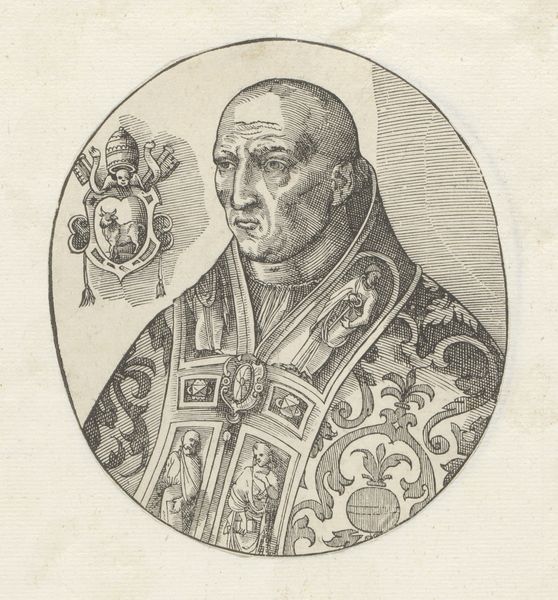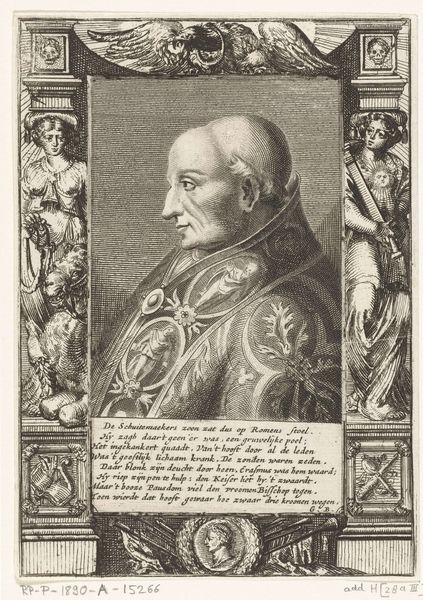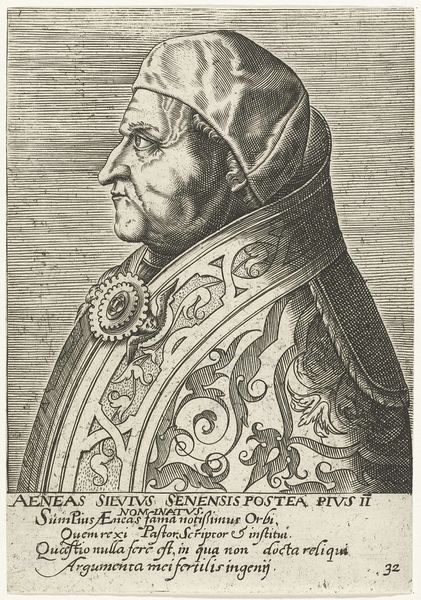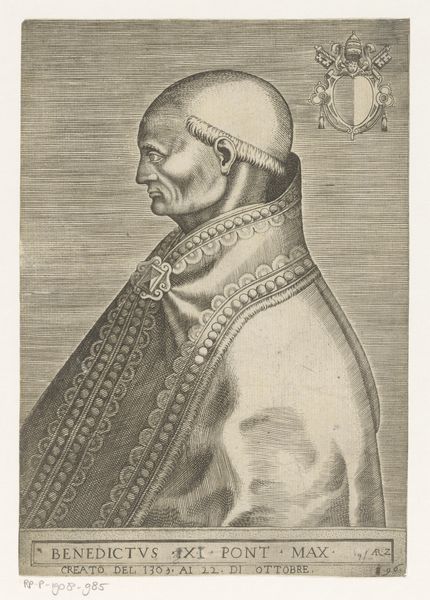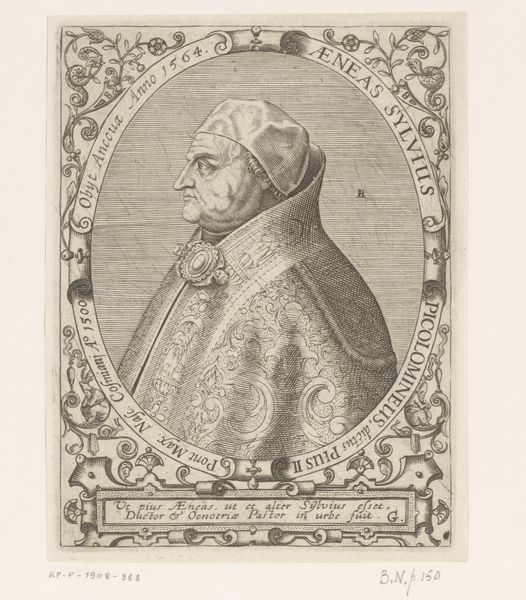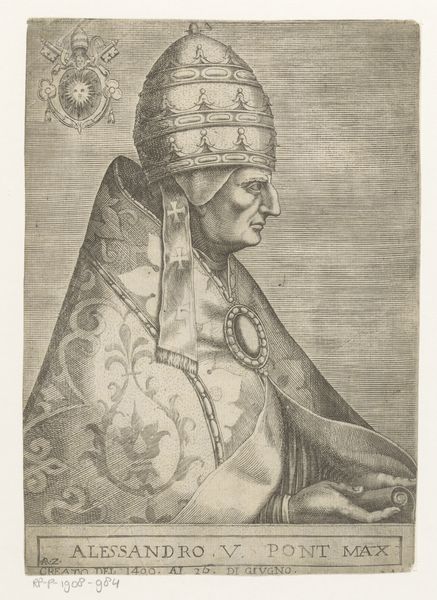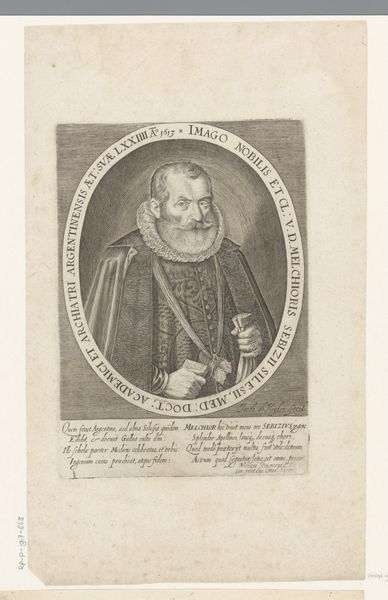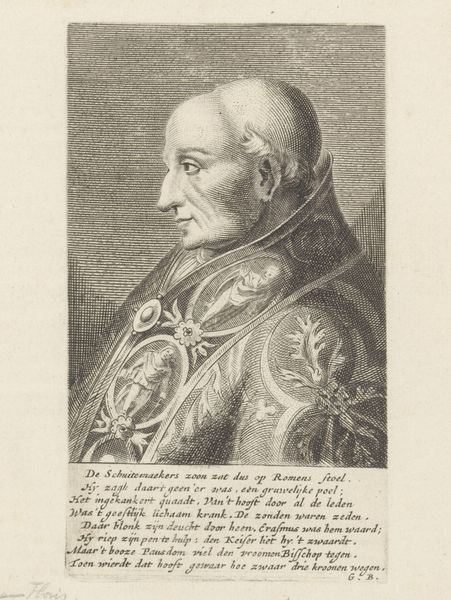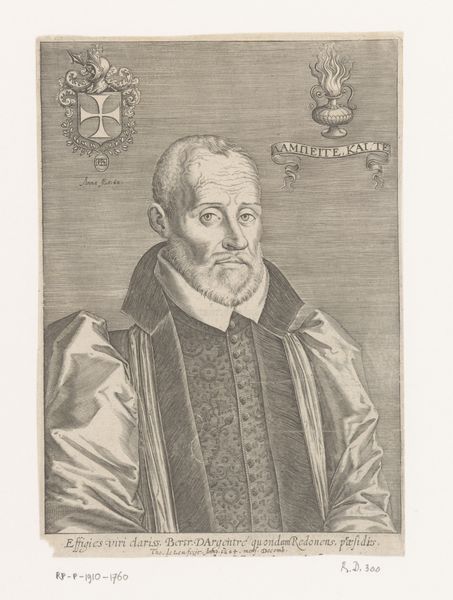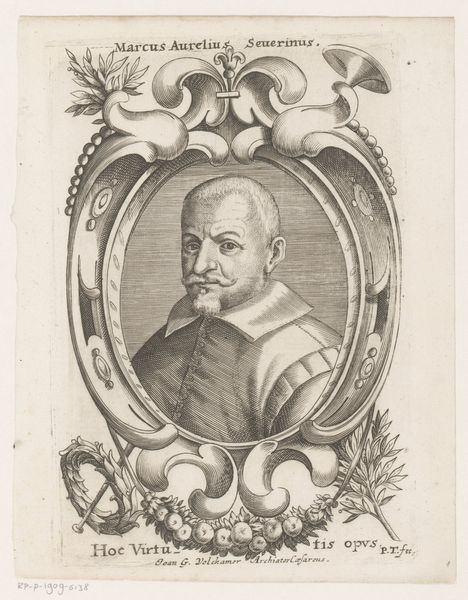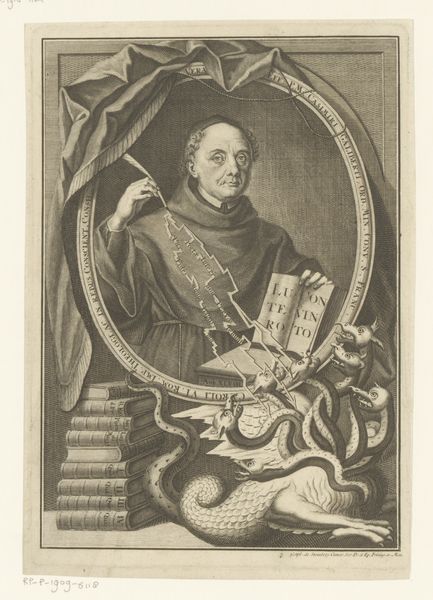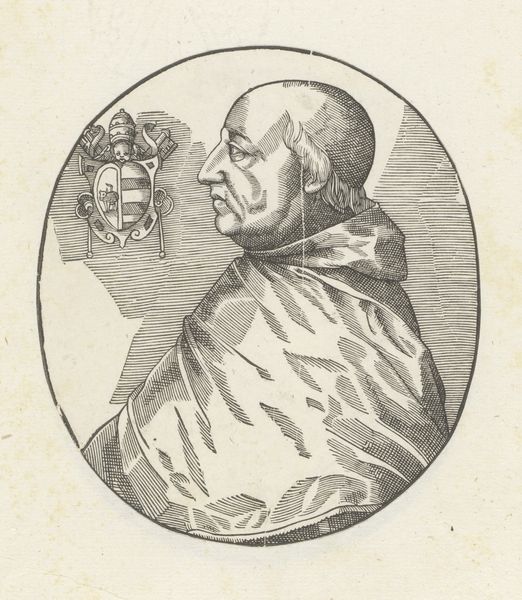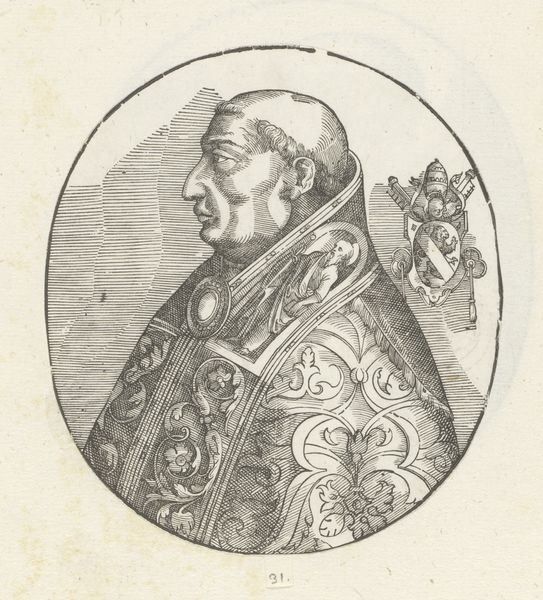
engraving
#
portrait
#
facial expression drawing
#
old engraving style
#
caricature
#
11_renaissance
#
portrait reference
#
geometric
#
portrait drawing
#
history-painting
#
engraving
Dimensions: height 236 mm, width 162 mm
Copyright: Rijks Museum: Open Domain
Curator: Before us is a work titled "Portret van paus Adrianus VI", created after 1585 by Monogrammist ARZ. The medium is engraving. Editor: My first impression is one of formality, of course, but also…defensiveness. He seems carefully composed, almost wary, like he's guarding himself. Curator: The engraving captures Adrian VI in profile, a common pose for portraits of powerful figures in the Renaissance, subtly emphasizing status and authority through controlled presentation. Editor: But there’s also a hint of unease, perhaps? It feels intentional, subverting the very authority it tries to project. The sharp lines seem to accentuate every wrinkle and line, conveying more than just papal power. I wonder, what's the role of such depictions during this time? Curator: Absolutely. Portraits such as this were key instruments in shaping papal imagery. Adrian VI's brief but significant papacy, from 1522 to 1523, occurred during the early years of the Protestant Reformation, where art became embroiled in theological and political tensions. A figure such as Adrianus would strive to project unquestioned authority. Editor: And that feeds into the narrative. Here’s a Dutch Pope in Rome, during immense religious and political turmoil. His origins "Traiectensis Belga", as referenced in the inscription at the base, marks his connection to Utrecht. The weight of that difference—being "other"—must've impacted how he governed and was perceived. Curator: Precisely. This portrait, beyond mere representation, serves as a historical document. Adrian VI attempted significant reforms, often meeting with resistance from within the Church itself. Editor: You can see a reference to that tension, perhaps in the tiny facial details. It prompts questions: How much of the image is calculated and how much reveals something more honest about the subject's interior life? I want to know what these lines really mean! Curator: Yes, portraits, particularly during politically turbulent times, invite a deeper investigation into the individual’s relationship to power, their vulnerabilities, and the socio-political circumstances. The formal rigidity almost necessitates a contrasting interrogation. Editor: In examining portraits such as this one, the opportunity to bring together historical context and critical interpretation feels particularly potent, even if conclusions remain necessarily ambiguous. Curator: Agreed. Engaging with the historical and social context helps us to reveal hidden power dynamics that encourage a deeper engagement with art’s historical role.
Comments
No comments
Be the first to comment and join the conversation on the ultimate creative platform.
